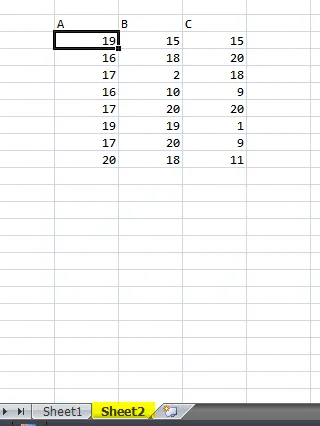我正在尝试编写一段脚本,如果Sheet 1的第一列的值大于或等于10,则将该行复制到Sheet 2。
Sub Macro1()
Cells(1, 1).Select
For i = 1 To ActiveCell.SpecialCells(xlLastCell).Row
Cells(i, 1).Select
If ActiveCell.Value >= 10 Then
Rows(ActiveCell.Row).Select
Rows(i & ":").Select
Selection.Copy
Sheets("Sheet2").Select
ActiveSheet.Paste
Sheets("Sheet1").Select
End If
Next i
End Sub

